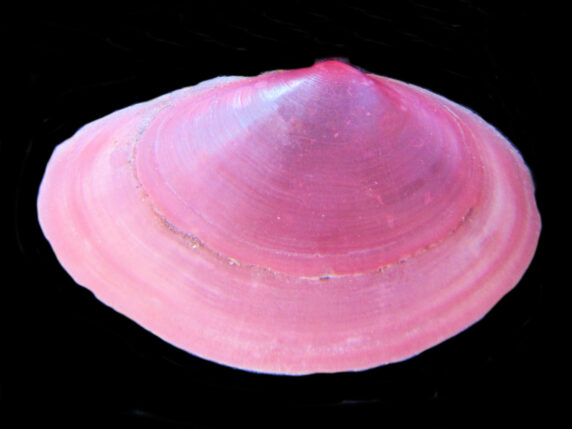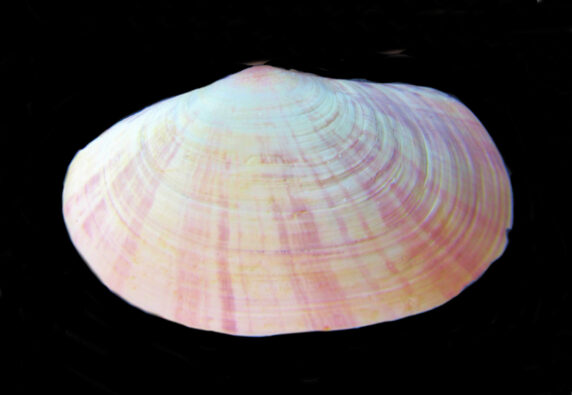![]()
Sunset Clams from the Psammobiidae Family are bivalve mollusks that derive their name from the often colorful, radial, rays on the shell’s exterior that project from the beak with from one to three cardinal teeth. The shells are thin that have an oval or elongated trapezoidal profile, the beaks are relatively centered and the valves are flattened. In some species there is a narrow gap between valves. Most species in the family are equivalve (both valves equal in size and shape). Most Sunset Clams have a smooth exterior or weak concentric lines, though some have radiating ribs. The interior is porcelaneous. Many Sunset Clams are covered, at least partially, by a periostracum. These mollusks have long siphons and a strong foot to facilitate burrowing.
Sunset Clams live buried in soft substrate. They may be suspension feeders or deposit feeders, using the siphons to suck up plankton and detritus that drifts by or that is laying on the surface of the substrate. They are found from the intertidal region to depths of 150 m (490 feet). They are preyed upon by crabs, predatory mollusks, rays, sea stars and shorebirds, crabs, rays, and sea stars.
Sunset Clams are found in tropical and temperate seas worldwide. There are one hundred and twenty species in the Psammobiidae Family of which nine are found along the coastlines of the Baja Peninsula. Sunset Clams are edible and some Asian species are considered delicacies.
 Tellin-like Sanguin Shell
Tellin-like Sanguin Shell Wide Gari Shell, Gari lata
Wide Gari Shell, Gari lata